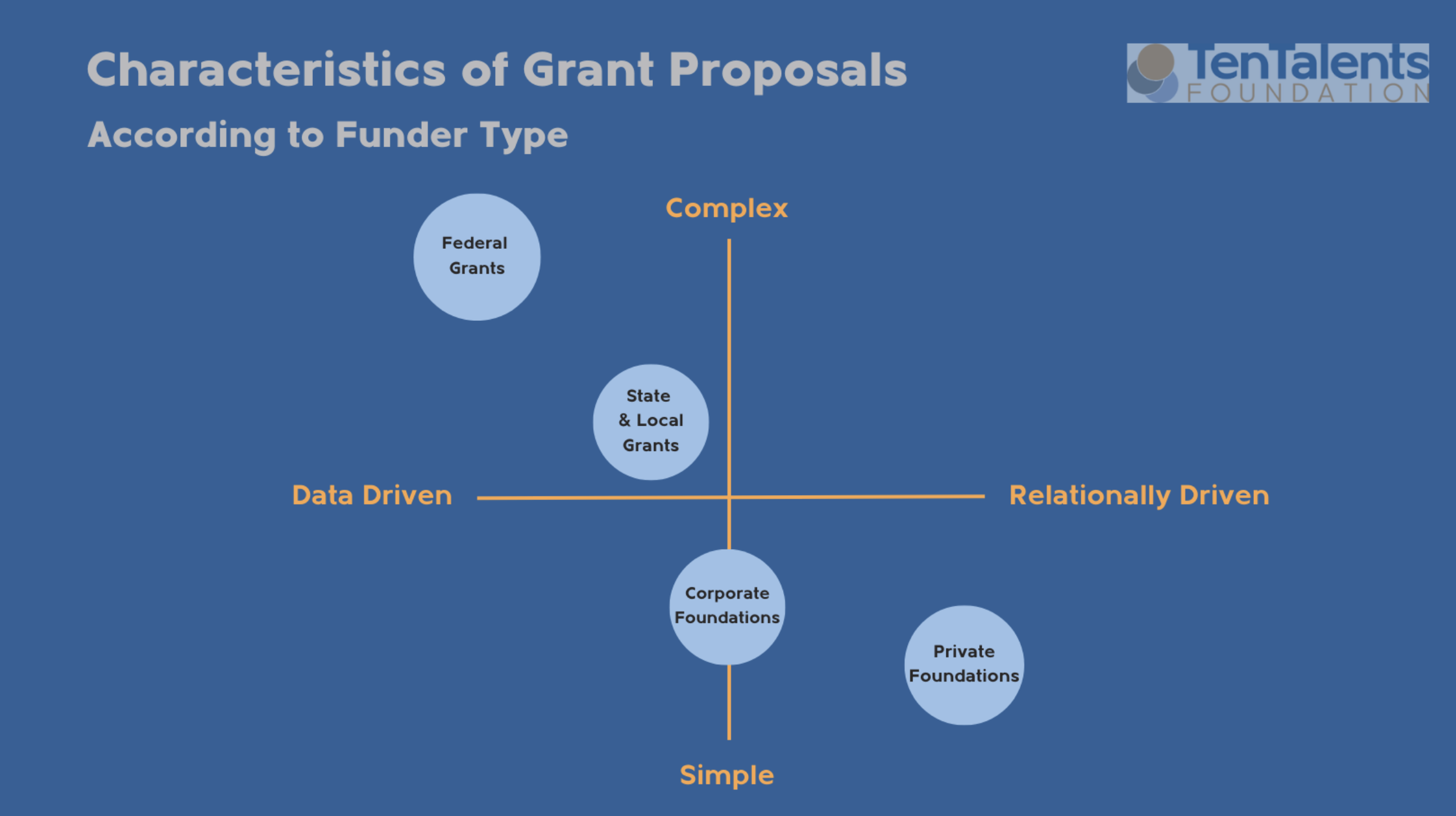Demystifying Grant Writing
How to Earn Grant Money for Your Organization
A grant, defined simply, is a gift of funding (cash, equipment, services, etc.) provided without any expectation of repayment.
The United States is home to over 86,000 grant making organizations. Each year, charitable organizations submit thousands of grant proposals in hope of securing funding. However, on average only 10%-20% of submitted proposals are funded. (Source: Instrumentl) The good news is grant writing is a skill that, just like learning to speak a new language or ride a bike, can be practiced, improved, and eventually mastered.
So, how can you set your organization up for success when seeking grant funding? In the following sections, we provide advice, resources, and wisdom gained from real-world grant writing experience to help increase your chance of succeeding in your grant endeavors. Whether you have written several grants or recently heard the term “grant writing” for the first time, this wisdom will help you and your team improve your skills!
The United States is home to over 86,000 grant making organizations. Each year, charitable organizations submit thousands of grant proposals in hope of securing funding. However, on average only 10%-20% of submitted proposals are funded.
How can you make your proposal stand out?
Tips for Effective Grant Writing
- Maximize efficiency by taking the time to research
Thoroughly researching grant opportunities takes more time initially, but saves time in the long run. To determine if a grant is worth applying for, carefully review the guidelines, including the funding areas, mission, geographical limitations, and grant amount. It’s better to submit one high-quality application than 3 low-quality applications!
When researching a grant opportunity, there are three questions you should answer to help you decide whether or not to apply:
- Is my organization eligible for this grant?
- Do the funder’s values/priorities align with the values/priorities of my organization/project?
- How high is the competition for this grant? (i.e., how likely is it that my organization will be awarded?)
- Use technical writing
Generally, grant writing is classified as a form of technical writing, not creative writing. Grant writing is technical because it describes the terms and conditions of a potential future contractual relationship between your organization and the funder and because grant writing is data-driven. Your grant proposals can reflect the creative thinking that may have inspired your programming and methodology even though the writing style is more formal or data-driven.
- Always write for your audience (the funder)
Ask yourself, “what does the funder/reviewer need and/or want to know about my project/program in order to approve it for funding?” The following graph illustrates the general priorities of different types of funders. (Click here to download the image)

- Consider the post-award requirements
Grants are commonly perceived as “free money” since they do not require repayment. However, it is important to understand that although they may not involve financial obligations, grants often come with certain conditions, strings, or restrictions. Faith-based organizations, in particular, need to exercise caution when accepting grant funding to ensure the post-award requirements do not compromise their mission.
Post-award grant management can be complex and time-consuming due to various factors. It involves complying with grant requirements, such as reporting and documentation, managing budgets and finances, and coordinating and monitoring the grant projects. Managing these requirements is often very well worth receiving the grant funding, but it’s important to have an understanding of the post-award requirements before accepting the grant.
How to Write a Letter of Intent
In grant writing, a Letter of Intent, commonly referred to as an LOI, is a brief proposal (typically 1-3 pages) submitted to a funder to introduce a project and request permission to submit a full grant proposal. LOIs are typically required by private funders (foundations and corporations), but not by governmental entities. Government agencies have their own, more complex requirements for grant proposals.
To help you get started on writing an LOI to a private funder (or to help you refine your current process!), here’s a description of the basic LOI structure.
Introductory Paragraph
Try to make a personal connection with the reader at the beginning of the letter. The first paragraph should include:
- A simple synopsis of your project/program
- A description of the positive impact your project/program will have on your served population. This impact should align with the funder’s stated mission and priorities.
- Demonstrated ownership of the proposed project/program. Use first-person, “we” pronouns (“our program”) instead of third-person, “they” pronouns (“their program” or “the program”).
- A recitation of the grant terms, including the amount requested and the length of the grant period (e.g., 12 months)
Body of the Letter
- Organizational Introduction
- History of your organization
- Vision and mission statements
- Organizational experience and accomplishments. This should be anything of note that makes your organization stand out (e.g., number of people served, awards/recognitions received).
- Description of leadership, including the qualifications and experience of the executive leadership and board members/elders.
- Problem Statement/Needs Statement. Identify the need/problem that your project will address. A good question to ask yourself when creating this section is, “How would our community suffer if our organization did not exist?” Also, show how the problem your organization is addressing relates to the funder’s goals and interests.
- Project Goals and Objectives. List the goals and objectives that your project is seeking to accomplish. As much as possible, provide quantifiable goals/objectives. For example, “Through the proposed project, [Organization Name] will expand our food distribution program to serve 50 more individuals weekly.”
- Description of Project/Program. This section is a more detailed description of the project/program for which you would like the funder to support. It should include a statement of the project timeline (when the project will start and when it is expected to end).
- Statement of Fiscal Responsibility. Two good questions to answer in this statement are, “Why should this funder trust our organization with these funds?” and “Why should this funder trust that our organization has the capacity and the integrity to follow through with the proposed project?”
- Request to Submit Proposal. LOIs are a request to submit a full proposal, and this intention should be stated directly. For example, “[Organization Name] requests to submit a full proposal to [Funder Name] for [Project Name].”
Attachments
Don’t include any attachments unless specifically requested by the grantor. Conversely, if the grantor does ask for specific attachments, make sure to include them! Funders may not consider your proposal unless they receive all of the requested documents. Commonly requested attachments include:
- List of current board of directors, including names, titles, and business affiliations
- Organizational budget for the current fiscal year
- Project budget for the proposed project
- Current W-9
- IRS determination letter verifying your organization’s status as a tax-exempt organization
- List of major funders and their donation amounts for the most recently completed fiscal year
Where to Find Grants
One of the top three challenges charitable organizations face in grant seeking is difficulty finding grant opportunities for which their organization is eligible. (Source: Instrumentl) Knowing where to look can save you a lot of time! The following table shows some of the most-used sources for finding grants and funders. (Click here for a downloadable PDF of the table!)

